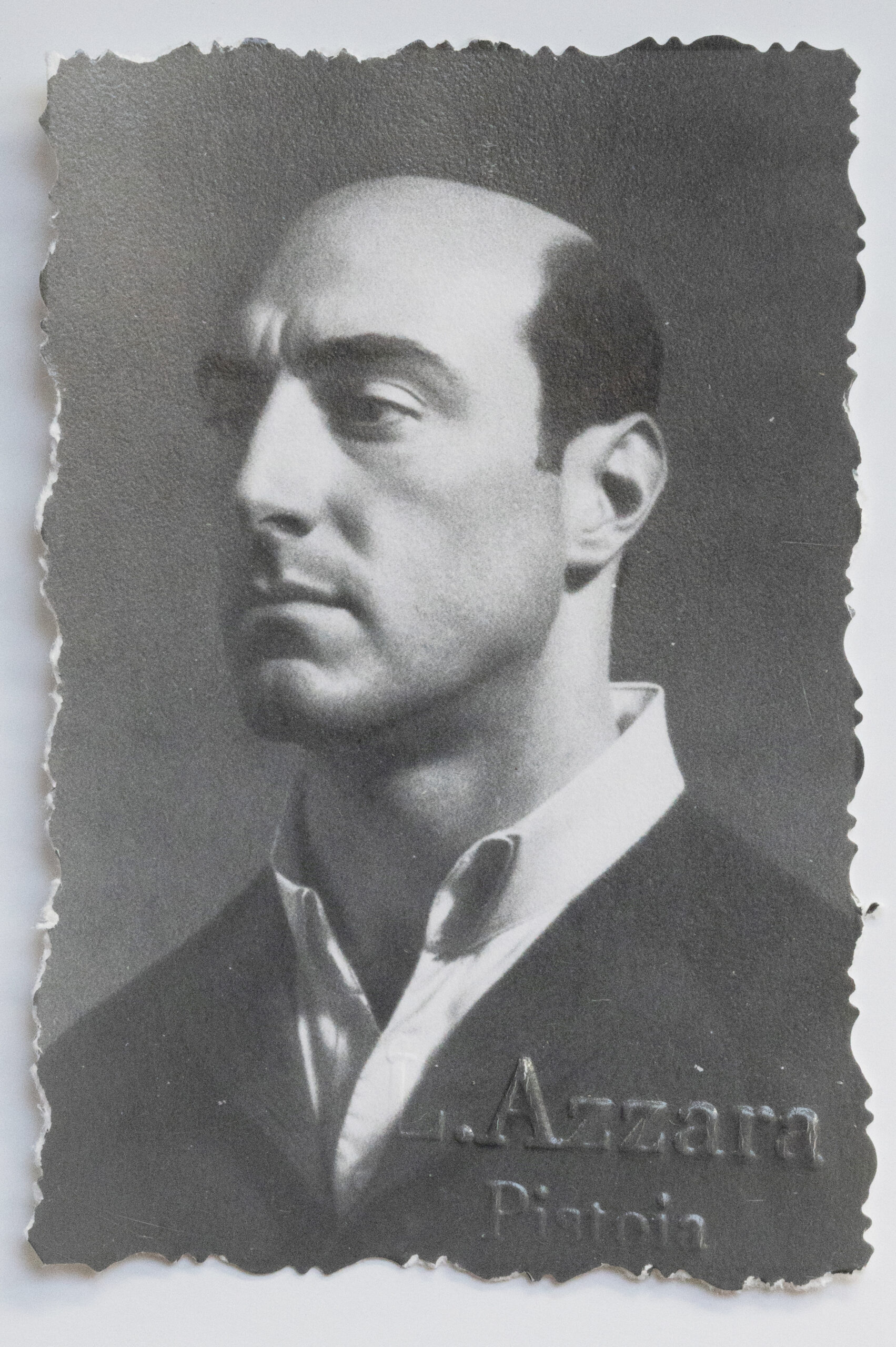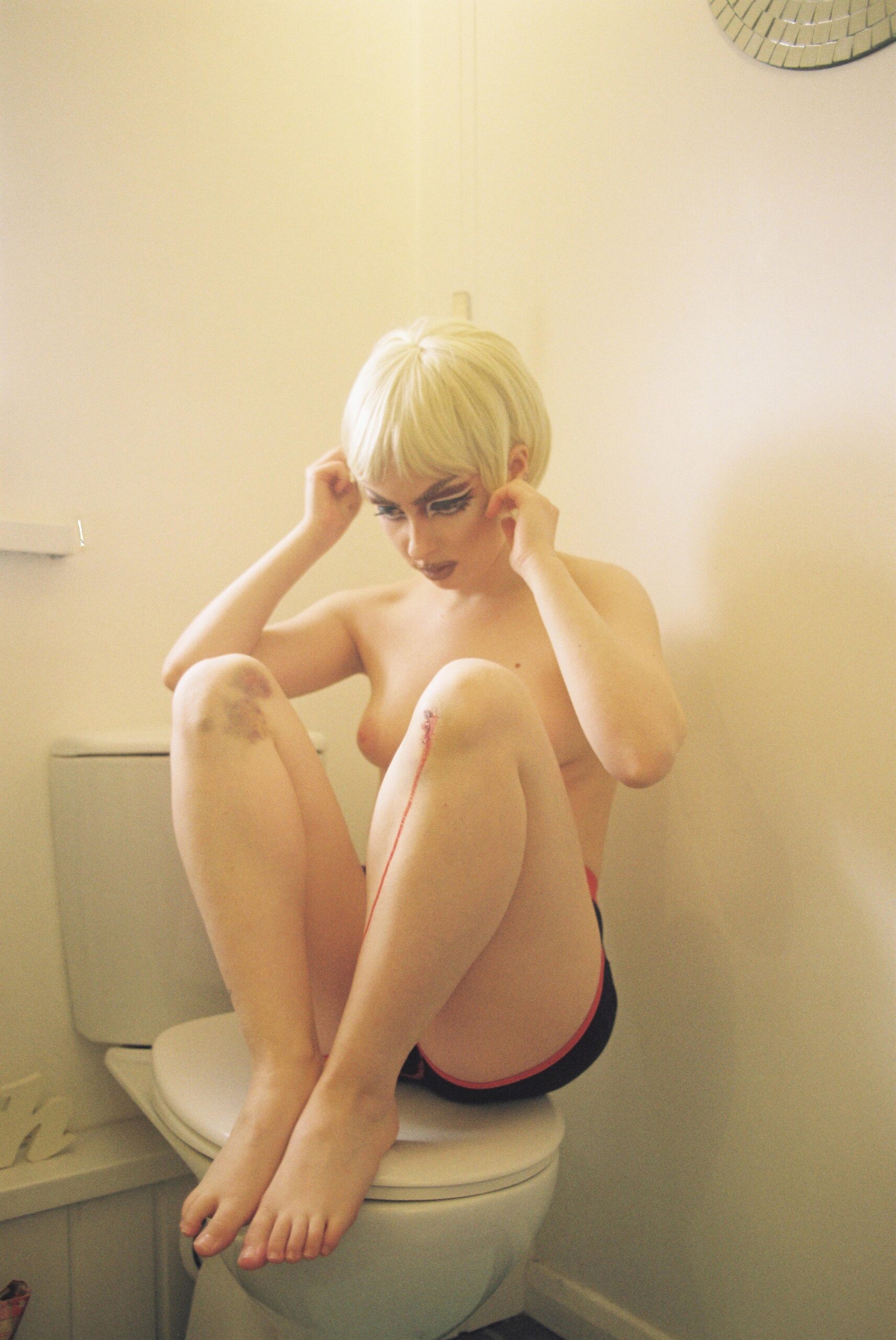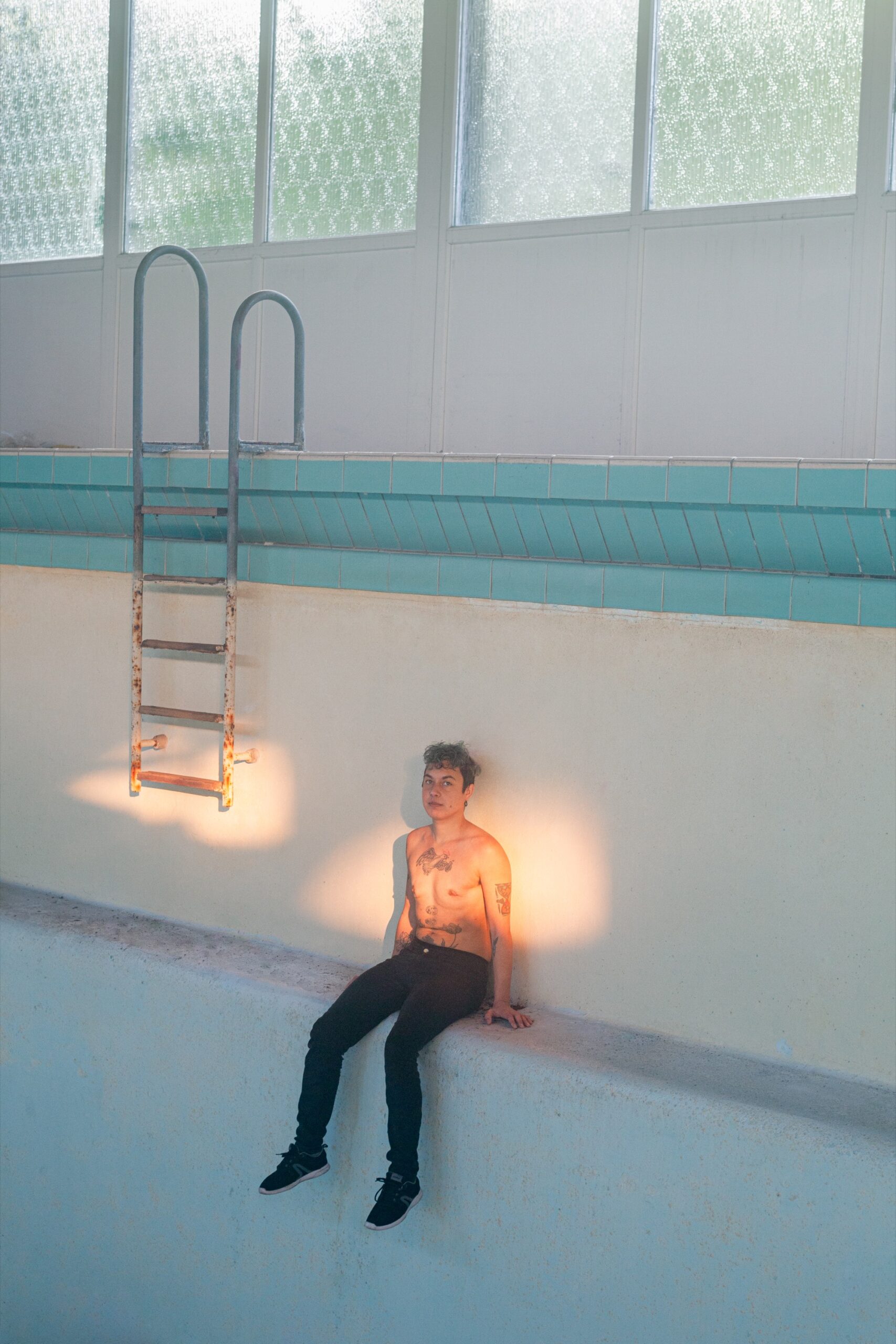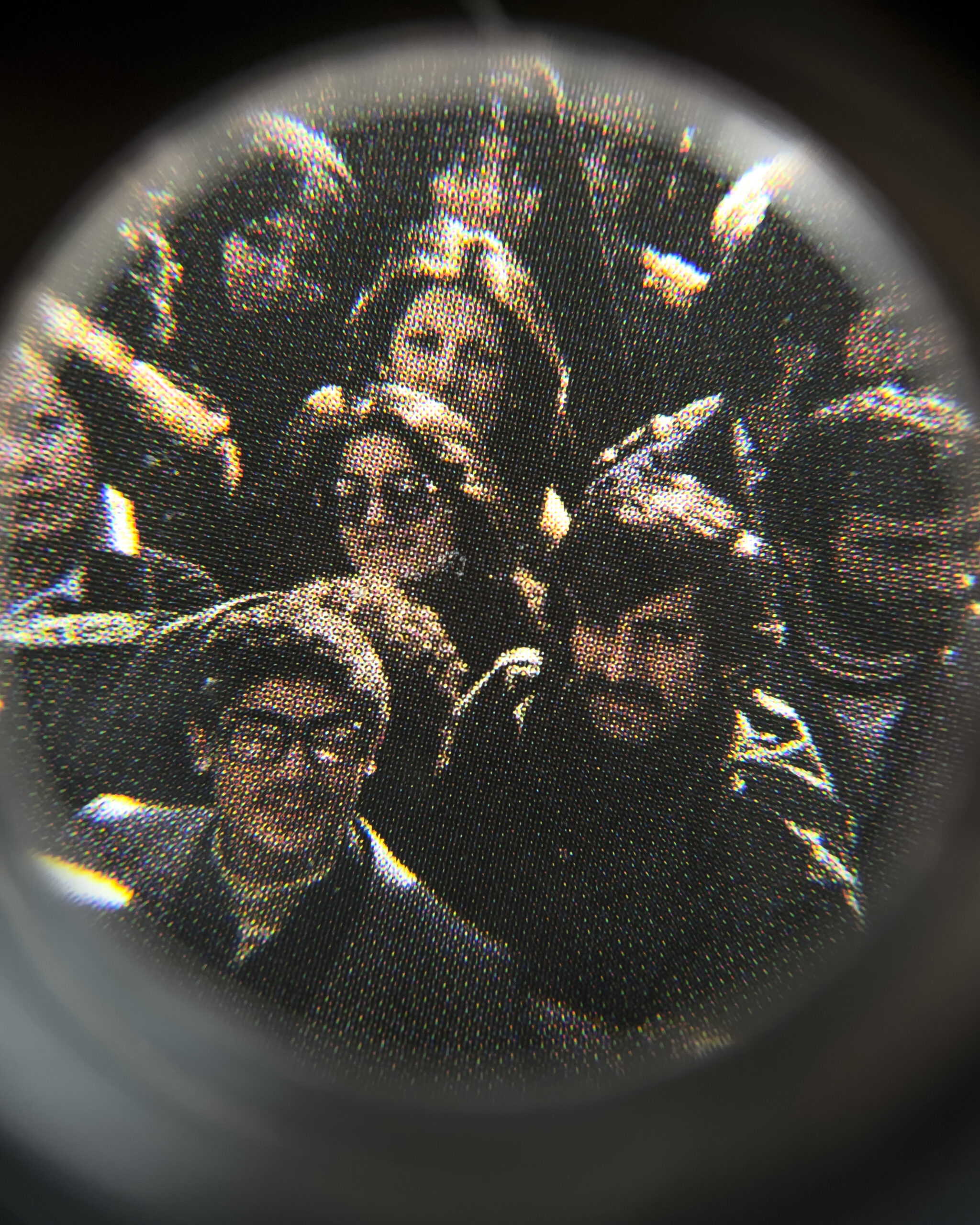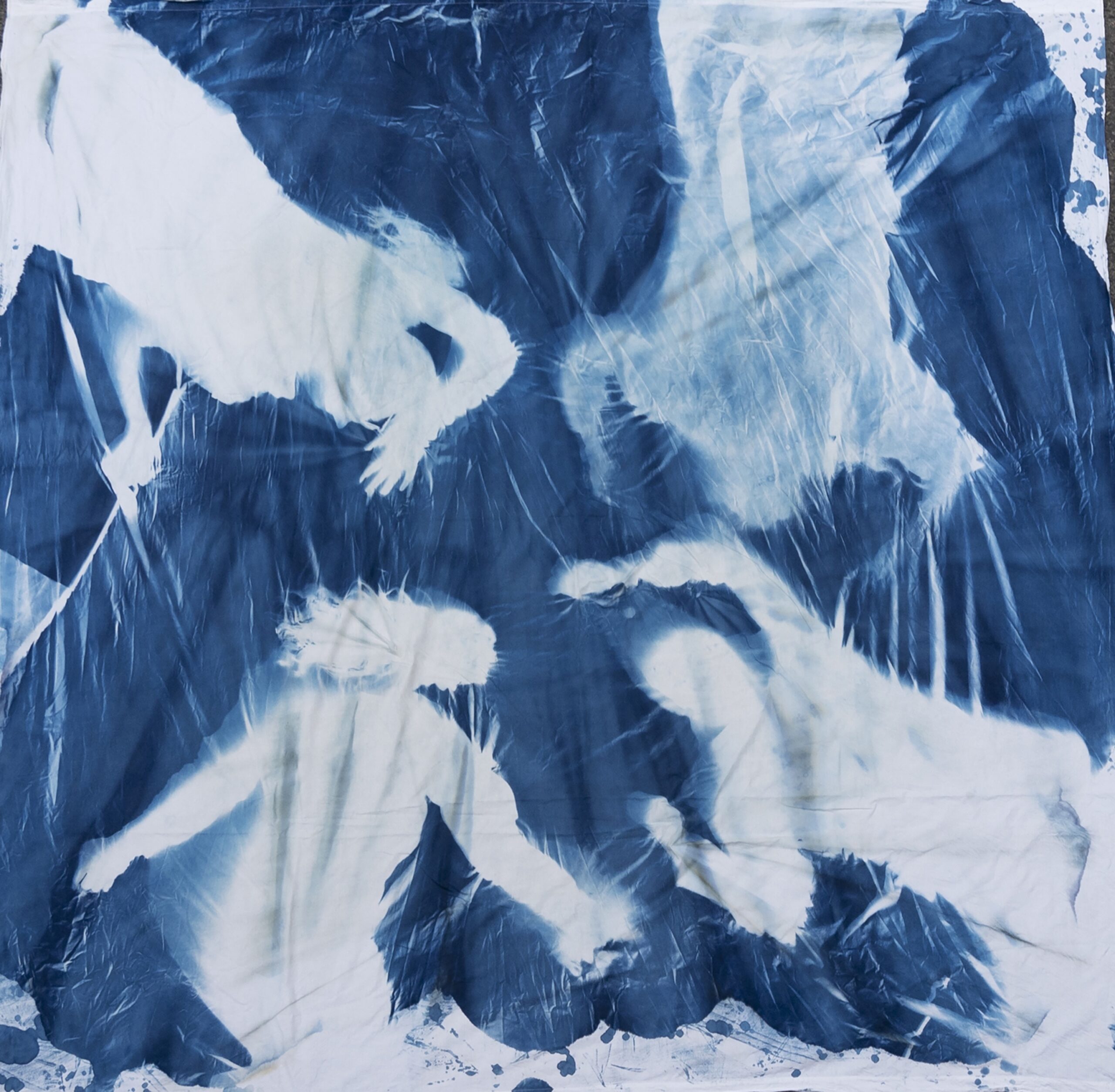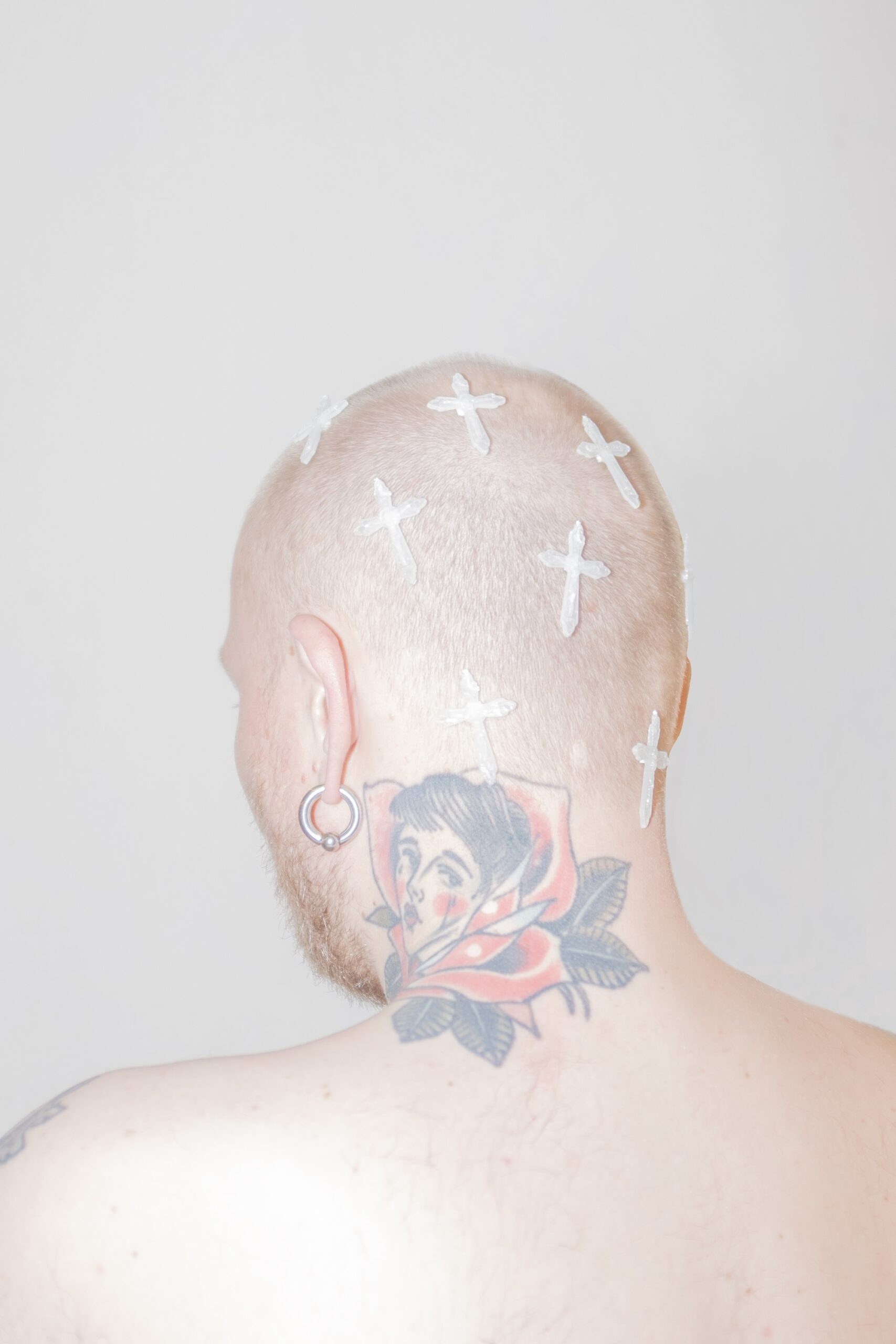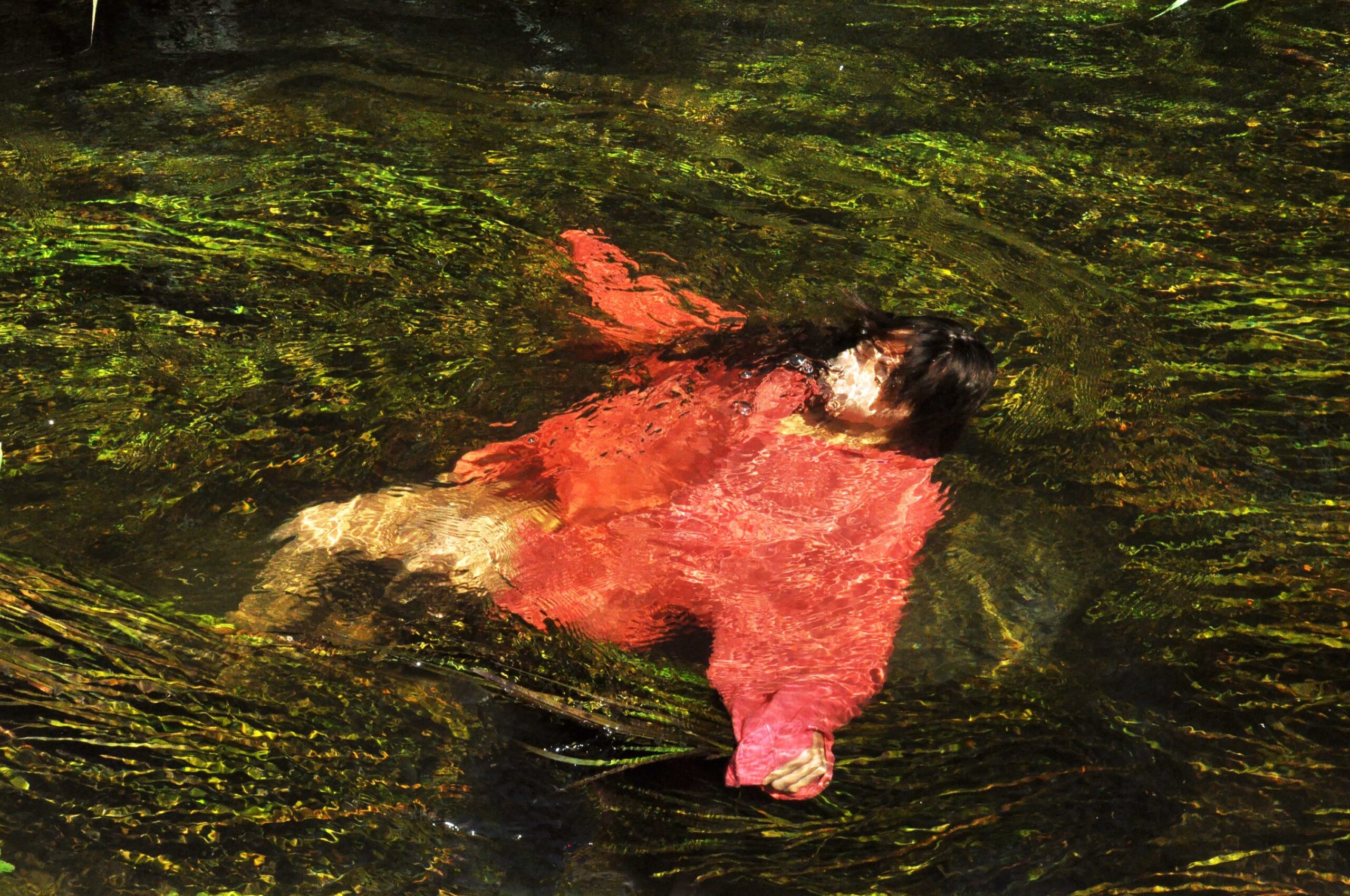[June 5, 2024]
Circulation(s). Jeune photographie européenne
Le Centquatre, Paris
6.04.2024 – 2.06.2024
By Érika Nimis
Every spring, Circulation(s), the European festival for young photographers, takes over the Centquatre,1 in the 9th arrondissement of Paris. On a sunny May afternoon, a mixed crowd mingled with urban dancers performing under the light-filled building’s immense glass roof.
Organized by the Fetart collective, composed of eight independent curators, Circulation(s) is intended to reflect the visions of emerging European photographers straight out of art school, still under the influence of all sorts of experiments and harbouring the desire to explore an unfettered horizon. The fourteenth edition brought together eighty artists who “rethink the image,” according to the editorial available on the festival’s website.2 For some photographers, this was their very first experience; in his exploratory installation Genealog.IA, for instance, Luca De Jesus Marques dissected the entire process that had led him, given a lack of available images, to use artificial intelligence to reconstruct a gallery of portraits of the men in his family from his own self-portraits.
As a platform offering young artists a chance to become accustomed to the gaze of the general public, Circulation(s) lived up to its name, inviting visitors to stroll freely among different spaces called “studios.” Each contained installations by three or four photographers grouped by affinity or complementarity; the transitional spaces were devoted to works that needed a bit more intimacy. Such was the case for the visual diary This Hurts by queer artist Audrey Blue (Ireland), through which ran the main themes of this highly political edition, oscillating between the liberation of bodies and genders and the exploration of every dimension of identity.
Despite the care devoted to creating a dynamic, well-thought-out scenography, I felt like there were too many visuals in this profusion of images that varied as to technique, format, and support. Once I got through the first minutes of confusion, however, I reached cruising speed as I circulated among engaging offerings and let myself be drawn, like a butterfly, to the light emanating from some of them. In La Peau du Prénom,3 for instance, Lyoz Bandie poetically and sensitively interprets, through images and written traces strewn on the floor, their obsessional quest for a new first name, “an essential step in [their] progress and transition.”
Along completely different lines, I became absorbed in two installations that challenge the power of the truth of the photograph as historical document. Truth is Stranger than Fiction, an enigmatic series by Masha Wysocka, was produced by cross-referencing two Cold War archives, consulted at the Blinken Open Society Archives in Budapest:4 a selection of “field reports” by the Radio Free Europe/Radio Liberty Research Institute and a set of amateur colour photographs, strangely framed or just plain failures, that were censored by the state photo lab. In his interactive installation Eyes Dazzle as They Search for The Truth, Amin Yousefi, an Iranian artist based in London, scrutinizes the gazes of anonymous individuals excerpted from photographs of demonstrations during the 1979 Iranian revolution.
All of the works were politically engaged to varying degrees. In the series Rebels, Natalia Godek (Poland) speaks out for activists protesting global warming in a precarious arrangement of large hanging sheets on which are printed cyanotypes of hands, feet, and bodies; this “collective portrait of the demonstrators at a 1:1 scale,” fragile and alive, frames a screen on which their actions of recent years, against all odds and with a sense of urgency, are projected, summarized by the big “ACT NOW” written in red on one of the cyanotypes.
Another piece of engaged work in these turbulent times was Belarusian photographer Sasha Velichko’s installation State of Denial. A political exile, Velichko ironically and forcefully dismantles, using artificial intelligence, the farce of the censorship-ridden press in her country by generating images as absurd as the headlines that relate, for example, an arbitrary arrest, as happens regularly in Lukashenko’s Belarus.
Since 2019, the Circulation(s) festival has presented a section focusing on a particular emerging European photographic scene, such as that of Belarus in the 2020 edition. This year, as a reflection of the sad European reality, it was Ukraine’s turn to offer four points of view that are already well established. Maryna Brodovska and Yevheniia Laptii chose to transcend their tragic experience of the Russia-Ukraine war in two series that transport us into calming, dreamlike visual worlds. The only man in the group, Dima Tolkachov, probed, in three mini-installations, how the gaze is transformed in contact with war. Finally, in her series Don’t Look at the Pain of Others, Lisa Bukreyeva, whose sensitive work I have already discussed,5 gathered videos of the war’s daily tragedies recorded by direct witnesses to the conflict and made small, fragile and moving prints on paper from screen shots converted into negatives.
In short, despite a few visual dissonances caused by the overcrowding of some installations, which would have profited from more spacing to be appreciated, this dynamic and stimulating exhibition, combined with a cascade of events (cultural mediation, master classes, portfolio lectures, and more), undeniably forms a bridge between the members of the general public who show up and young European photographers. In other words, circulate – there’s lots to see!
Translated by Käthe Roth
Érika Nimis is a photographer, historian, and publisher, specializing in the history of photography in West Africa, and a researcher affiliated with the Art History Department at UQAM. In 2020, she began a photographic project on Ukraine, the home country of her paternal grandmother.
NOTES
1 The immense Centquatre building, which once housed the Paris municipal undertaker, was converted into an extraordinary cultural spot dedicated to the living arts in 2008.
2 The festival’s website (www.festival-circulations.com) is a showcase for the artists who have participated since its creation in 2011, with access to the archives of past editions.
3 La Peau du prénom was published by Éditions du Caïd in 2023, editionsducaid.com/fr-fr/products/lyoz-bandie-la-peau-du-prenom.
4 www.osaarchivum.org.
5 Érika Nimis, “Photography and Ukraine, Keeping Eyes Open to the War,” Ciel Variable 123 (Summer 2023), https://cielvariable.ca/en/issues/ciel-variable-123-the-power-of-intimacy/photography-and-ukraine-keeping-eyes-open-to-the-war-erika-nimis/.

